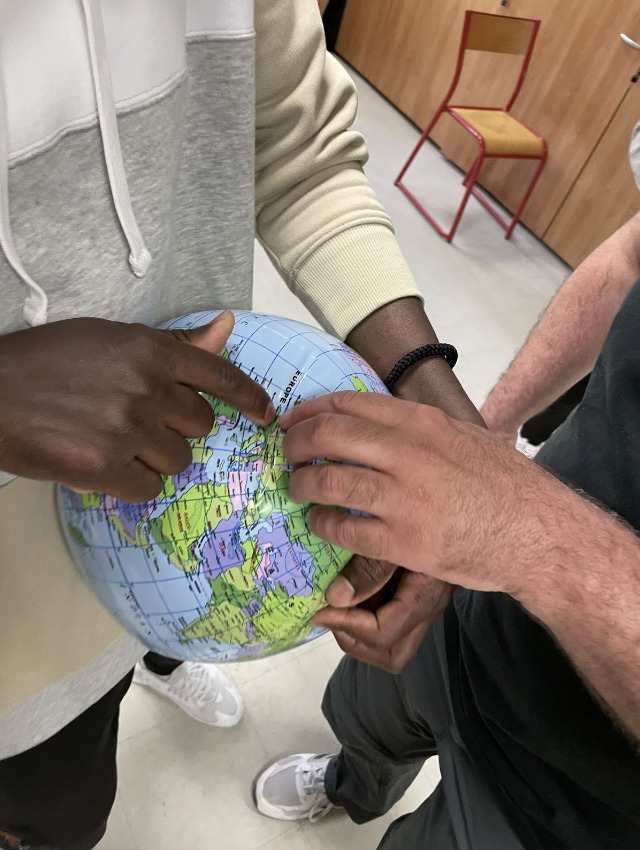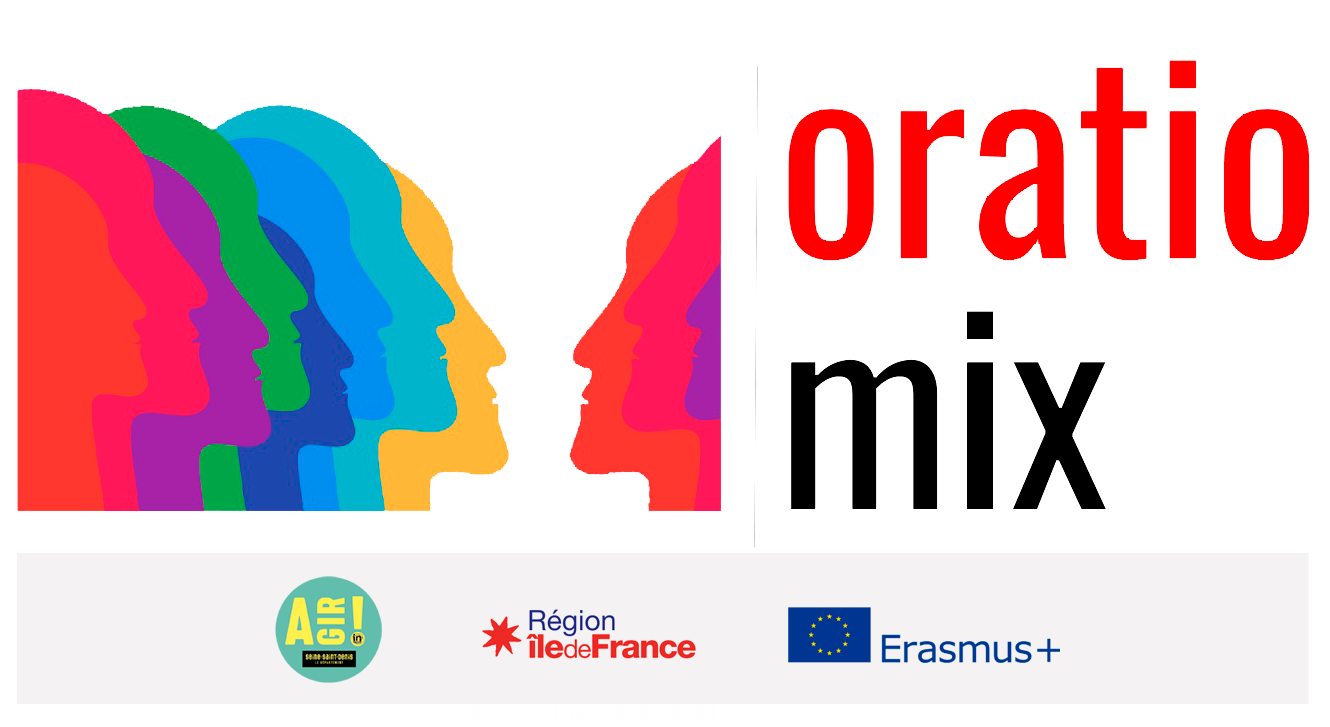Workshop 6 : Staging
Implementation: what do we need?
– Internet access;
– a video broadcasting device (projector or screen)
– A workspace: the room provided must be large enough and arranged in such a way that it can accommodate all participants and allow freedom of movement, the workshop requiring physical commitment.
The participants
Primary students between 7 and 10 years, the group not exceeding 30 students
Speaker
School teacher, educator, theatre teacher
Objectives of this workshop
discover different forms of expression
address the issue of traditions in different cultures
apprehend their bodies differently than on a daily basis
Time required
60-90 minutes
We recommend 60 minutes for 7-8 year olds and 90 minutes for 9-10 year olds.
Implementation
This workshop uses the drawing
Finality
At the end of the session, children will have:
Developed their curiosity for other cultures
Exploring new choreographic possibilities
1. Warm up
For this session that will be very demanding on the body, we propose a warm-up based on the principles of mindfulness. The concentration of the students will then be directed in turn to the different places of their body. This concentration will be favored by the establishment of a real relaxation from the beginning of the session.
- Students choose a place where they feel comfortable in the space, where they can sit or lie on their backs at their convenience. We ask them to close their eyes.
- They are asked to focus on their breathing: they must visualize the path of the air within their body. Accompany them by quoting the nose, throat, chest and belly. Then on exhalation, the reverse path with the belly, chest, throat and mouth.
- They are asked to pay attention only to the noises inside the room. Then, listen only to the noises that come from outside the room.
Then they are told that they are on a warm sandy beach. They must feel the parts of their body in contact with the sand such as feet, legs, glutes; they are lying down, back, back of arms and head. Then ask them to feel the sun on their skin that warms their knees, belly, throat and face with their nose, mouth, eyes, forehead and cheeks, not to mention the ears.
Students then move their extremities in a barely perceptible way to awaken their bodies, keeping their eyes closed. Then they try to stand up with their eyes still closed.
Finally, students should try to move slowly around the space with their eyes closed, without touching each other, and without encountering the furniture around the room.
You can finish by asking students how they feel now. How did they feel before the exercise? How did they feel during the exercise?
2. Exchange
Introduce the session with a moment of exchange between you and the students. Explain that you are going to talk to them about dance today. Ask them:
What do you know about dance? What does it look like?
Where are we dancing?
on the street,
in a classroom,
on stage,
in the playground…
Why are we dancing?
party,
celebrate an event (wedding, funeral in West African countries, birthday…)
present a show (end of year gala, professional dancer)
What body parts can we move when dancing?
This last question leads to experimentation in music. All students stand up and take their space. On music, we guide them as in the warm-up by offering them to explore how to move the different parts of their body.
3. Viewing
You can create your own video list on Youtube or use the playlist we created from a Youtube collection. The dances we offer are from cultures around the world but not only. It is also interesting that students can become aware of the wealth of proposals that already exist in their environment thanks to a wide diversity: classical dance, hip-hop, French cancan, contemporary dance
The idea is to mark a stop between each excerpt to ask the students what they saw, what they noticed different,…
We have organized the playlist in order to cross-check similarities and oppositions. For example, we have the opportunity to note that:
feet are in high demand in Algeria, Canada and Ireland, although in different ways.
some formations are common as the round or the line dance that we find in Andorra, Belgium, Bhutan and the USA in the country dance.
The dance in couple is present on several continents as with the Brazilian Tango or the Viennese waltz
sometimes it is the hands that are solicited as in Austria, China or India
the promotion of the basin returns to the Democratic Republic of Congo, Polynesia and Egypt
dancers stand by the shoulders in Armenia, Bosnia and Herzegovina, Bulgaria and Greece
accessories such as scarves in Albania and Italy are sometimes used with pizzica, large skirts such as in Colombia, Costa Rica and Spain, fans in Japan and small feather dusters in Benin.
the theatricality of traditional Botswana dance can be compared with contemporary dance
The little plus: have a planisphere to show students where the countries you mention are located so that they can identify with their own place of life!

4. Restitution
Students are now invited to take their space and test new forms of movement that they have been able to view and have just debated. The facilitator can engage students in this way by suggesting, by small reminders, movements that they had notified. You can also notice if a. e student is doing interesting work and suggest to the group of the. to follow, before moving on to another student.
5. End of ritual
Clapping
The. a leader stands opposite the other members of the group in order to be seen by all. He/she positions his arms horizontally and will clap his hands above his head. The others must imitate him at his/her pace. Then, little by little, he.elle will accelerate until reaching applause.
